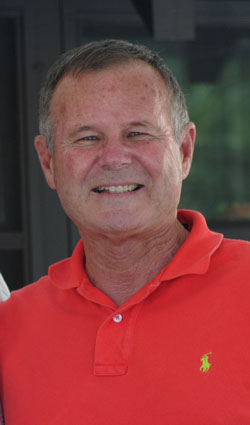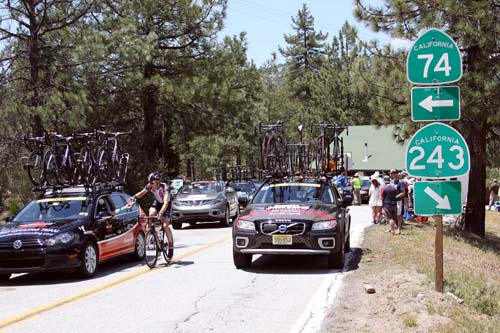Incumbent Riverside County Sheriff Stan Sniff is encountering his toughest election campaign since he became sheriff in 2007. On a 3-2 vote, the Board of Supervisors selected Sniff over three other candidates to replace former Sheriff Robert Doyle.
Sniff was easily reelected in 2010 and 2014. In both elections, he received nearly two-thirds of the votes cast. In the 2014 June primary, his opponent was Lt. Chad Bianco, who is challenging him again.

Sniff is a native to Riverside County. He grew up in Indio, where his father served on the city council, while a member of the county Sheriff’s Department. Sniff began his 43-year law enforcement career as a member of the Coachella Police Department in 1975. Four years later, he transferred to the Riverside County Sheriff’s Department, where he rose through the ranks to assistant sheriff.
Jail space
Sniff also argues that Riverside County needs more jail space. But he notes this problem has existed since the early 1990s. Riverside County has continually lagged its neighboring counties in terms of jail beds.
Statewide, the courts have been involved. Courts have declared that jail crowding is not an acceptable punishment. Consequently, federal and state jurists have required local jurisdictions to either improve and increase accommodations for inmates or release the least dangerous to society.
“Early releases have been a contentious and thorny issue for sheriff after sheriff,” Sniff said. “There is no other way to deal with court orders except through more jail capacity.”
The Board of Supervisors controls the funding for the Sheriff’s Department and relies on Sniff’s recommendations, although the board must balance funding for all county agencies, from public safety and social services to libraries and animal services.
The new jail in Indio, the John J. Benoit Detention Center, has taken several years to fund and then construct. Even as work is completed, the supervisors have not funded the full complement of staffing. Rather, they have mandated that the sheriff incrementally staff the new jail.
Only this year has he been able to hire some new staff in anticipation of using the Benoit Detention Facility by the end of the calendar year, he added. In the spring of 2019, Sniff expects the Indio jail inmates to be transferred to the new facility and the old structure be razed.
“Full funding of personnel is the next tsunami,” Sniff expects.
While the new Indio jail will have about 1,600 beds, this is about a 1,300 net increase for the county, for a total of nearly 5,000 beds. Sniff compares this capacity to San Bernardino County, which has about 7,500 jails beds with a smaller population.
Cannabis
Regulation and enforcement of state and county laws and ordinances regulating the cannabis business is a complex issue, Sniff stressed.
The responsibility is not solely with the Sheriff’s Department. The District Attorney has a task force and Code Enforcement is deeply involved.
“It’s extraordinarily complex,” Sniff said. “It’s partly a money issue with the board thinking it’s a revenue generator.” The enforcement will be complicated and Sniff expects it to frustrate his staff, particularly in the unincorporated areas.
Marijuana eradication is especially expensive. It requires a large amount of staffing to do undercover work, research financial and property records, and legal work, he explained. As departmental staffing has fallen, he has not been able to refill every vacancy, even for these type of special projects.
Budget
“We just don’t have enough staff,” he lamented. And he expects pension issues will loom over future county budget discussions.
Goals
Sniff wants to “regain muscle in the unincorporated areas.” He will try to return to the prior staffing levels. And he also has a commitment to restore staffing to the regional law enforcement task forces and teams.
“The drug and gang task forces have not been as rebuilt as we should be,” he said. “But I’m optimistic in the long term.” Yet he recognizes that the county does not have an excess of revenues.
Election
“I hope I’m lucky enough to have support for another four-year term,” he said. “Crime has dropped and we’re exceptionally well managed.”
Sniff noted that the Riverside County Sheriff’s Department is one of the largest in the country with a budget of more than half a billion dollars. There are many complex issues.
So, he questions whether a lieutenant, Bianco, is prepared to assume a management role this big. “He’s somebody who has never been a pilot, let alone in the cockpit,” Sniff claimed.
For example, Sniff expects that the cost to supply staff and sheriff’s services to the contract cities will become an issue in the next few years. Several cities have already said that they can afford the contracts with county.
Sniff questions Bianco’s preparation for negotiating this issue with other police chiefs and city managers. “We’re still the most cost effective right now, he said. “But we and they have no choice with labor costs and we can’t subsidize other agencies.”
Campaign financing
Sniff again pointed to the dominant role that the Riverside Sheriffs’ Association has played in financing Bianco’s campaign. By the end of June, it had contributed more than $800,000 and another $130,000 more recently. Other law enforcement associations such as the California Correctional Officers, who have contributed more than $100,000, and the Los Angeles and Corona peace officers, who have sent more than $10,000, are involved in the county campaign.
In previous elections, the Riverside Sheriffs’ Association supported Sniff and gave contributions to his campaign, even in 2014 against Bianco.
When asked about the money, Sniff replied, “This is biblical, the amount of money is historic.” He attributed it to his 2015 decision requiring deputies to wear body cameras and the “union’s” opposition.
“Will the ‘union’ control the department?” Sniff opined.
In 2014, Bianco spent less than $40,000 in the race. This year, his expenses are approaching $1 million. Sniff spent about $250,000 four years ago. At the end of June 2018, his total expenditures were nearly $600,000. The cost of the November election is not yet tallied.
The amount of money has drawn a lot of attention to the race, Sniff noted. As a result, he believes that future sheriff races will become more partisan. Both he and Bianco are Republicans, but he sees partisan issues influencing future campaigns.





